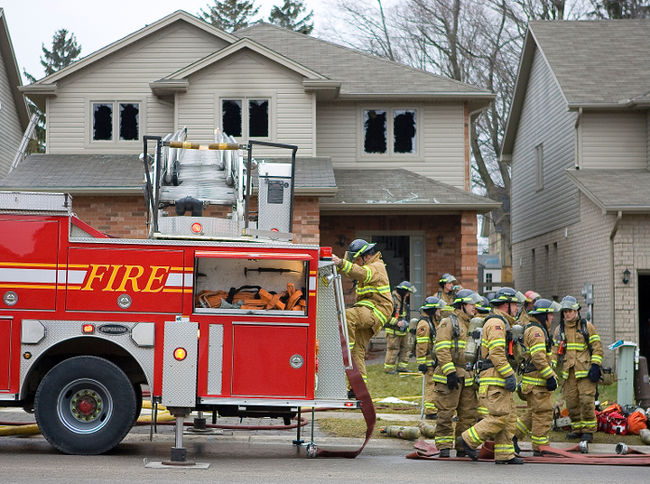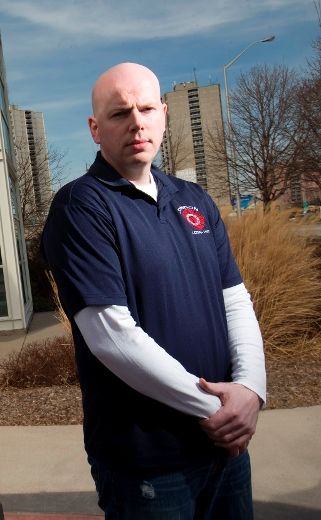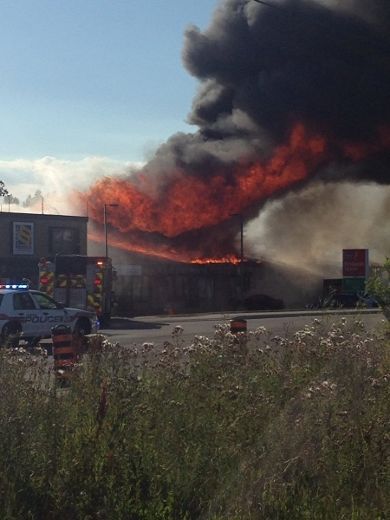The London fire department is suffering from morale problems and urgently needs more staff and more reserve equipment, says a report prepared by Warren Kimball, a fire service consultant from Jamestown, R.I.
The report, released Thursday, was prepared for the International Association of Firefighters at the request of the London Firefighters’ Association.
The Kimball report says there should be a minimum of four men to a pumper and six to an aerial truck.
Association secretary Gary Weese said in that 1973, an Ontario fire marshal’s report recommended five men to a pumper and six to an aerial truck but the department still uses three men on aerial trucks, four – if available – on pumpers and four on rescue units.
The Kimball report includes 20 pages of findings and a 20-point summary of recommendations.
It suggests that all fire calls be handled by firefighters and the fire communications centre be returned to central firehall when the hall is enlarged.
The fire department’s communications centre was integrated into the police communications centre when police moved into their new station on Dundas Street in the fall of 1974.
The Kimball report says, “the women (civilian dispatchers) should be returned to the police chief, who hired them for police responsibilities, and two experienced firefighters should be returned to each shift at the communications centre as was the practice when the communications office was in the fire station.”
Since the fall of 1974, civilians have been hired to assist in dispatching police and fire calls. Police are now working in the fire communications side of the centre handling fire calls.
“The general feeling of the police department is that they have no business in fire communications,” said Julius Melnitzer, counsel for the London Firefighters Association.
As of Nov. 3, only one firefighter, communications officer Owen Wills, will be in the fire communications room, and then only on day shifts.
Firefighter Art Ordish, association president, said morale in the department is “getting worse. The city knows it and so does the chief.”
The Kimball report, said Mr. Weese, is unbiased because he came to much the same conclusions about manpower and equipment as the fire marshal’s report which was never made public.
Both Ordish and association vice-president Don Hunter agreed there’s a need for more manpower.
They said six men are needed on an aerial truck to manually handle a 55-foot Bangor ladder if the aerial unit cannot be used.
Mr. Hunter said last week the aerial could not reach a man atop a pole because the pole was on raised ground.
He said he and two other firefighters, unable to handle the Bangor ladder, were helped by an off-duty firefighter, a policeman and an ambulance attendance.
Firefighters said the Bangor ladder might be needed quickly and the next unit might not arrive to help for another four minutes.
Members said the association has attempted to point out the seriousness of manpower and equipment shortages to elected representatives but “no one has listened.”
Mr. Weese said a decision was made to “tell the public through the media” the concerns of firefighters.
Mr. Melnitzer, who brought out highlights of the report at a press conference, said it would have been made public earlier but there was an opinion it might jeopardize negotiations – now completed – covering salaries for this year and next. A new contract was agreed on by city council and firefighters on Sept. 17.
The new contract gave the firemen a 22.8 percent salary and pension increase over two years. A first-class fireman remains at his 1975 salary of $15,039 for the first three months of this year, moving to %15,610 on April 1 and to $16,800 as of Aug. 1. The salary is to go to $17,808 Jan. 1.
The agreement is subject to Anti-Inflation Board acceptance.
There are 291 authorized members of the fire department in total, 272 of which are in the firefighting division.
Mr. Weese said Warren Kimball is a retired fire chief who is operating a private fire consulting service.
The report was commissioned in April of this year after remarks were made by Controller Art Cartier that the fire department could function with less men, Mr. Weese said.
“We were undermanned as it was so we had to decide how do we prove this,” he said. The report was out in June.
Mayor Jane Bigelow said this morning that she was not impressed with the report and that it lacks credibility.
Besides, she said, she has not as yet received a copy of it.
“I had to scrounge one up myself this morning,” she said.
“I would have thought if they were serious about it they would have sent elected people copies.”
“First of all, she said, “it’s done by an American, who, as far as I can see, has had no practical experience firefighting.”
“He uses the U.S. experience – he talks about civil disobedience – and that’s not the London experience.”
“There’s no data in the report, no charts.”
Concerning the morale problem as claimed in the report, Mayor Bigelow said: “As far as I know there hasn’t been anybody resign over it, and there’s no many candidates. . . “
As far as additional men is concerned, she said firefighters negotiated for more and were turned down. “The response time is good in comparison to other cities. We just don’t need any more firefighters.”
Mr. Melnitzer said copies of the report were put into the mail on Thursday to the mayor and other members of city council.
Fire chief Ray Morley is on vacation and not available to comment.
Mr. Melnitzer, flanked by association members, said firefighters feel there is a “lack of cohesion and direction” within the department.
“The attitude taken by the city endangers not only the firemen themselves, but the general public,” he said.
Mr. Weese said most London firefighters are of the opinion “fire services in London are slowly being downgraded.”
On the need for six men to an aerial, Mr. Weese described a serious fire in a building in the core area of the city.
Fourteen men will arrive at the scene, not all at the same time.
The rescue unit, carrying four men, the aerial truck, carrying three, and a pumper will stop at the front. Another pumper will go to the rear of the building.
All these men, said Mr. Weese, have specific jobs – to connect hoselines, search the building and alert everyone inside, get on the roof and bring the aerial’s rescue ladder into play if needed.
With all men employed, the six men needed to get the Bangor ladder up to a set of windows are not available until more help arrives from other parts of the city, Mr. Weese said.
The Kimball report recommends the immediate hiring of 12 extra men and a total of 28 extra on the force by the time another rescue unit arrives, probably in November.
Seven of 20 recommendations deemed urgent are:
• Maintain a minimum of four men, including a captain on duty with each engine company and each truck at all times.
• Provide at least two experienced firefighters on duty in the communications centre at all times with at least one an officer.
• Build an addition to central firehall to house another engine company (No. 11) and an adequate fire communications centre separate from the police centre.
• Build a No. 10 fire station on Dundas Street to protect the eastern part of the city, now from other stations, and house an engine company in this station.
• Provide a complete modern fire training facility, with proper tower, adjacent to the recommended No. 10 station.
• Modify the new aerial truck to provide a safe place for assigned personnel to ride to and from fires.
• Specify enclosed cabs with sufficient seats for the safe transport of assigned personnel on all new apparatus.
Excerpts of the Kimball report say:
• The London fire department is an efficient, well-managed and well-trained force. Its chief deficiency is that insufficient fire- (Please Turn to Page 4, Col. 5)
(this article continues on to another page that is missing)





